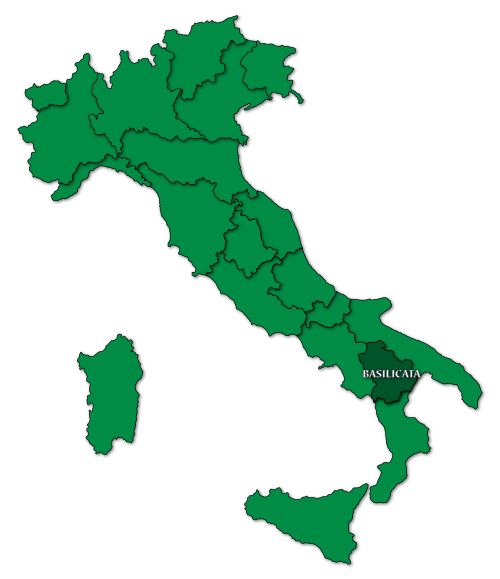 Getting to know Basilicata, Italy
Getting to know Basilicata, Italy
A Region of Mystery, Heritage, and Natural Wonder
Basilicata, tucked between the better-known regions of Puglia, Campania, and Calabria, is one of Italy’s best-kept secrets. Located in the southern part of the country, this rugged and enchanting region is known for its ancient towns, dramatic landscapes, and rich traditions. With its deep-rooted history, stunning natural parks, and unique culinary flavors, Basilicata invites travelers to explore a side of Italy that remains authentically untouched.
Here are some interesting aspects of Basilicata:
Economy:
Basilicata’s economy has long been based on agriculture, with a focus on wheat, olives, and wine production. It is also known for its sheep and goat farming, leading to high-quality cheeses and meats. In recent years, tourism has become an important economic driver, especially thanks to Matera’s rise to fame as a European Capital of Culture in 2019. Small-scale artisanal production, renewable energy (particularly wind and solar), and a growing wine industry are increasingly important for the region’s economic future.
Architecture:
Basilicata’s architecture tells a story that spans millennia. The most iconic example is found in Matera’s Sassi, ancient cave dwellings carved into the limestone rock, which form one of the oldest continuously inhabited settlements in the world and are now a UNESCO World Heritage site. The region is also home to medieval castles, Romanesque churches, and baroque palaces scattered across its rugged landscape. Each town and village offers a glimpse into a different era of history, from Greek and Roman influences to medieval and Renaissance artistry.
 Cultural Heritage:
Cultural Heritage:
Basilicata’s cultural heritage is as deep and layered as its rocky terrain. Throughout its history, it has absorbed influences from Greek settlers, Romans, Byzantines, Normans, and Spanish rulers. Traditional festivals, ancient religious rituals, and folk music, such as the haunting "tarantella lucana" dance, continue to be celebrated today. The region’s history of rural life, migration, and resilience has shaped a distinct cultural identity that is proudly preserved in its museums, traditions, and everyday life.
Cuisine:
The cuisine of Basilicata is hearty, rustic, and deeply tied to the land. Simple ingredients are elevated into flavorful dishes that reflect centuries of peasant traditions. Specialties include peperoni cruschi (crunchy sun-dried peppers), cavatelli pasta, lamb dishes, and pane di Matera, a rustic bread known for its dense crumb and long shelf life. Basilicata is also famed for Aglianico del Vulture, a robust red wine grown on the volcanic slopes of Mount Vulture. The local food scene is a perfect representation of southern Italy’s emphasis on authenticity, tradition, and bold flavors.
Folklore and Traditions:
Basilicata is a land where folklore and ancient traditions are still very much alive. Festivals such as the "Rite of the Trees" (Rito degli Alberi) in Accettura celebrate ancient fertility rites, where townspeople carry enormous trees from the forest to the village in a lively, symbolic wedding between nature and humanity. Religious processions, like the Madonna della Bruna festival in Matera, combine devotion with spectacular pageantry, culminating in the destruction of a giant papier-mâché float. Masks, music, storytelling, and seasonal rituals are deeply woven into the region’s identity, offering visitors a vivid glimpse into customs that have been passed down for centuries.
Fashion and Design:
Basilicata’s contribution to Italy’s fashion scene may not rival that of Milan or Florence, but it excels in traditional crafts. The region is known for its artisanal leather goods, hand-woven textiles, ceramics, and intricate jewelry. The aesthetic often reflects Basilicata’s connection to nature and tradition, with a growing movement of young designers blending heritage techniques with modern creativity.
Natural Beauty:
Basilicata’s landscape is breathtakingly diverse and dramatic. The region offers wild mountains, lush forests, and spectacular coastlines along both the Tyrrhenian and Ionian Seas. The Pollino National Park, Italy’s largest national park, is a paradise for hikers and nature lovers, featuring rare wildlife and stunning mountain vistas. On the western coast, the picturesque town of Maratea boasts dramatic cliffs and secluded beaches along the Tyrrhenian coast, earning it the nickname "The Pearl of the Tyrrhenian." Inland, Mount Vulture, an extinct volcano, offers scenic vineyards and ancient lakes perfect for exploration.
Matera:
Matera is the crown jewel of Basilicata and a must-visit destination. Its ancient Sassi districts, with homes, churches, and monasteries carved from rock, create a surreal and unforgettable landscape. After decades of decline, Matera has undergone a remarkable transformation and now thrives as a cultural and artistic hub. Its narrow alleys, hidden courtyards, and stunning viewpoints offer a magical glimpse into an ancient world that still pulses with life today.
Maratea and the Coast:
The coastal town of Maratea offers another side of Basilicata’s charm, with its colorful harbor, beautiful beaches, and the towering statue of Christ the Redeemer overlooking the town. Maratea’s old town, with its maze of narrow streets and more than 40 historic churches, is a perfect destination for travelers seeking both relaxation and cultural enrichment.
Basilicata embodies the timeless spirit of southern Italy—rugged, authentic, and full of quiet beauty. From its ancient cave cities and dramatic landscapes to its rich culinary traditions and warm hospitality, Basilicata offers a journey through history, nature, and culture unlike any other. Whether you are seeking adventure, peace, or a deep connection to Italy’s roots, Basilicata welcomes you with open arms and endless discoveries.










